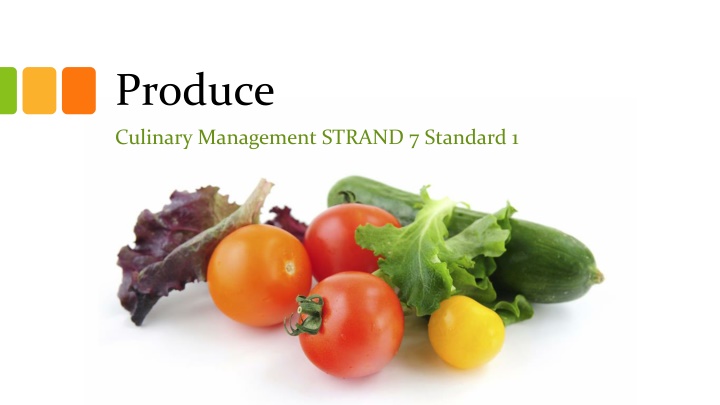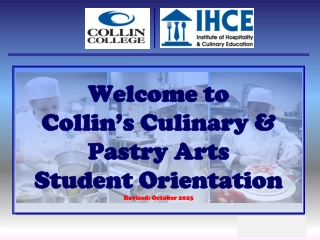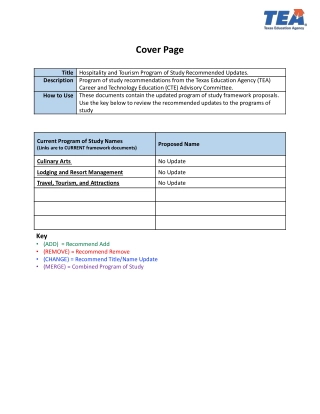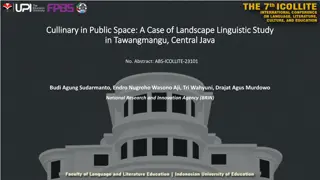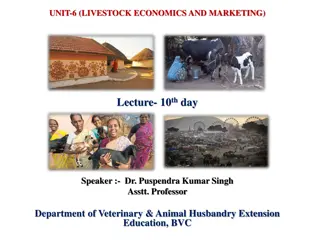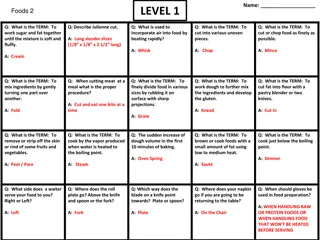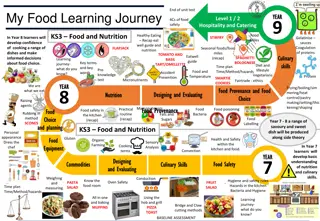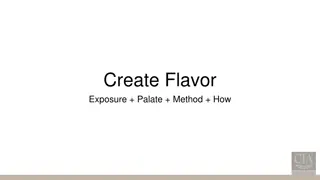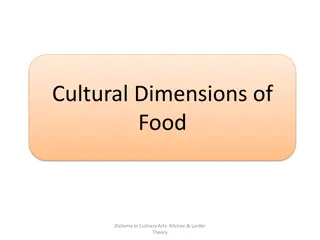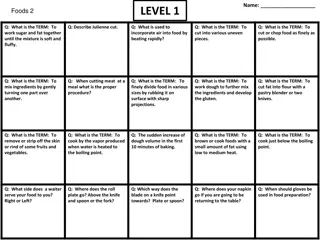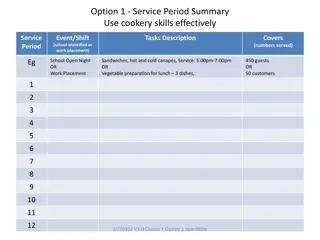Effective Produce Management in Culinary Practice
Understand the importance of quality produce, considerations for purchasing fruits, proper storage techniques, washing produce, preventing enzymatic browning, and cooking using both dry and moist heat methods.
Download Presentation

Please find below an Image/Link to download the presentation.
The content on the website is provided AS IS for your information and personal use only. It may not be sold, licensed, or shared on other websites without obtaining consent from the author.If you encounter any issues during the download, it is possible that the publisher has removed the file from their server.
You are allowed to download the files provided on this website for personal or commercial use, subject to the condition that they are used lawfully. All files are the property of their respective owners.
The content on the website is provided AS IS for your information and personal use only. It may not be sold, licensed, or shared on other websites without obtaining consent from the author.
E N D
Presentation Transcript
Produce Culinary Management STRAND 7 Standard 1
Quality of Produce Fresh, Canned, Frozen, Dried, Preserved Some fresh produce is purchased cleaned, peeled or cut. Generally more $$$ and less flavor
Purchasing Fruit Consider Cost Is it in season? Quality Is it in season? Storage How can I best store this to keep the quality? Do I have space? Use How will I use it and when will I use it.
Storage of Produce Temperature will vary depending on the produce. To finish ripening fruits, store at room temperature. To slow the ripening process, chill fruits. Starchy vegetables (potatoes, squash, onions) should be stored between 60-70 degrees in a dry location.
Produce Storage Most produce will last about a week if properly stored.
All produce needs to be washed before use. Some produce can be washed before storing, but should be dried and stored. Herbs are stored with their stems in water. Some produce like berries and mushrooms should not be washed until just before using.
Enzymatic Browning The process of food, mainly produce, turning brown from the exposure to oxygen and/or cell damage. Apples, potatoes, bananas, avocadoes, peaches, and pears.
Preventing Enzymatic Browning Submerge in water. Lemon juice or other acids lower the pH. Blanching or other forms of cooking denature the enzymes. Lower temperatures can slow the rate of reaction.
Cooking Techniques Dry Heat (preserves the nutrients and flavors) Grilling/broiling, roasting/baking, deep frying (adds more calories and makes the food less nutrient dense), saut ing
Cooking Techniques Moist Heat (can result in significant nutrient loss) To help prevent nutrient loss, cook for a minimum about of time and use as little water as possible. blanching/par boiling, steaming, simmering, braising, boiling
